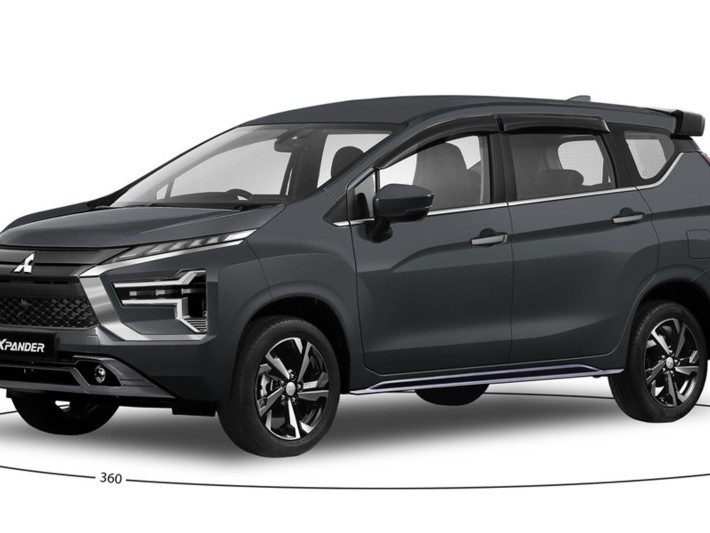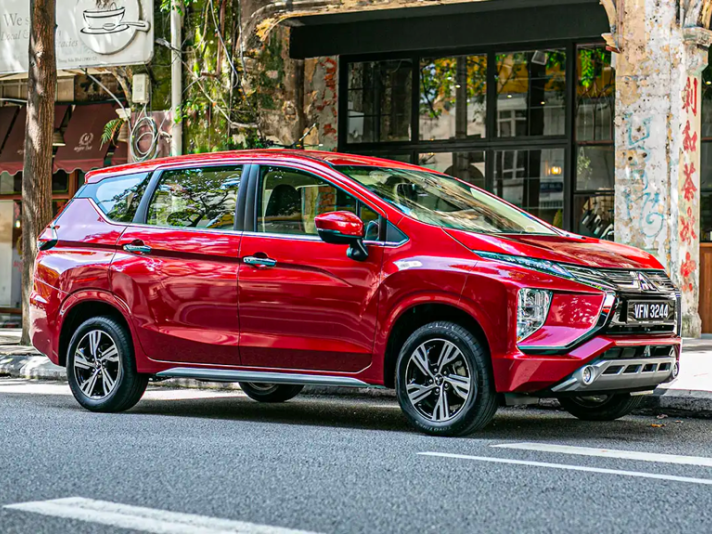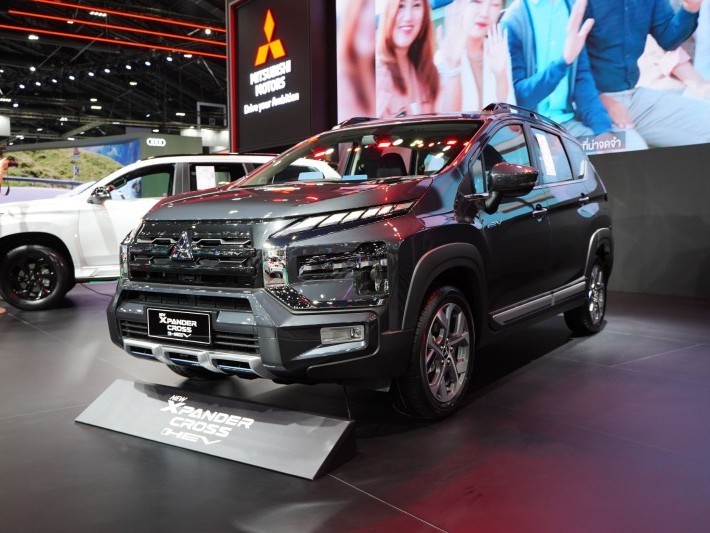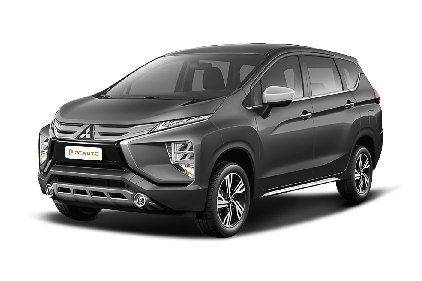Q
berapa harga mobil mitsubishi xpander
The Mitsubishi Xpander's pricing in Malaysia varies depending on the trim and specs, typically ranging from around RM 91,369 to RM 105,369. Keep in mind, these numbers can shift with promotional deals or if you opt for extra accessories, so your best bet is to hit up your local dealer for the latest figures.
As a 7-seater MPV, the Xpander has struck a chord with family buyers thanks to its roomy interior, practical features, and solid value for money. Under the hood, you'll find a 1.5L MIVEC engine that delivers a smooth drive and decent fuel efficiency – perfect whether you're navigating city streets or heading out on a long road trip. Safety hasn't been skimped on either, with essentials like ABS, EBD, and dual airbags coming standard to keep you protected.
Another plus? Its higher ground clearance, which helps tackle those rougher patches of road you might encounter around Malaysia. Inside, the cabin keeps things simple and functional, hitting the mark for what families really need. If you're in the market for an MPV, the Xpander's definitely worth a look – but don't forget to cross-shop with rivals like the Toyota Avanza or Perodua Alza to make sure you're getting the best fit for your budget and needs.
Special Disclaimer: This content is published by users and does not represent the views or position of PCauto.
Related Q&A
Q
What engine is in the Mitsubishi Xpander 2023?
The 2023 Mitsubishi Xpander is powered by a 1.5-liter MIVEC four-cylinder naturally aspirated gasoline engine, delivering a maximum output of 105 horsepower and a peak torque of 141 Nm. It comes paired with either a 5-speed manual or a 4-speed automatic transmission. This engine prioritizes fuel efficiency and smoothness, making it ideal for daily family use. As a 7-seater MPV, the Xpander's engine is tuned to emphasize low-end torque, suiting city driving and load-carrying needs. It also features Mitsubishi's MIVEC variable valve timing technology, which optimizes power response and fuel consumption. Among its peers, many competitors like the Toyota Avanza or Honda BR-V also use naturally aspirated engines of similar displacement, but their tuning and technical focuses vary. The Xpander stands out for its high reliability and relatively low maintenance costs, appealing to practicality-minded consumers. For those seeking more power, Mitsubishi offers other models with turbocharging technology, but the Xpander is positioned more towards economy and practicality, targeting family users.
Q
How much is the new Xpander 2023?
The official price of the all-new 2023 Mitsubishi Xpander ranges from RM99,980 to RM111,980, depending on the variant, including the standard Xpander, the high-spec Xpander, and the Xpander Cross. All models are powered by a 1.5L MIVEC naturally aspirated engine paired with a 4-speed automatic transmission, delivering a smooth driving experience. The Xpander is known for its spacious 7-seater cabin and flexible interior layout, making it ideal for families. The addition of the new ADAS advanced driver assistance system further enhances driving safety. This MPV stands out for its value-for-money proposition in its class, especially appealing to consumers who prioritize practicality and comfort. When purchasing, you can also check out the promotional offers from different dealers, such as free maintenance services or low-interest loans. If you're interested in the Xpander, it's advisable to visit a nearby showroom for a test drive to experience its handling and space firsthand. You might also want to compare it with other models in the same category, like the Toyota Avanza or Honda BR-V, to make a more comprehensive buying decision.
Q
What is the ground clearance of the Xpander 2020?
The 2020 Mitsubishi Xpander has a ground clearance of 205mm, a design that makes it perform exceptionally well on Malaysia's diverse road conditions, handling both city driving and occasional country roads with ease. The higher ground clearance not only improves the vehicle's off-road capability but also effectively prevents the undercarriage from scraping on rough roads, making it particularly suitable for water accumulation section that may appear during Malaysia's rainy season. Ground clearance is one of the key indicators for measuring the practicality of SUVs and MPVs; models typically ranging between 180mm and 220mm can balance comfort and off-road performance. As a 7-seater MPV, the Xpander maintains a spacious interior while also focusing on optimizing the chassis height, giving it a competitive edge among models in its class. For Malaysian consumers, choosing a model with appropriate ground clearance is especially important, as it directly relates to the convenience and safety of daily driving, especially when dealing with areas with poor road conditions.
Q
What is the fuel consumption of the Mitsubishi Xpander Cross 2020?
According to official figures, the 2020 Mitsubishi Xpander Cross has a combined fuel consumption of approximately 6.5 to 6.9 liters per 100 kilometers, though the actual numbers can vary depending on driving habits, road conditions, and vehicle load. It’s powered by a 1.5-liter MIVEC naturally aspirated engine paired with a 4-speed automatic transmission, delivering smooth power and decent fuel efficiency—perfect for Malaysian family daily use. For owners looking to cut fuel costs further, regular vehicle maintenance, keeping tire pressure at the recommended level, and avoiding aggressive driving like sudden acceleration or hard braking can all help boost fuel efficiency. Plus, as a crossover MPV, the Xpander Cross doesn’t just shine in fuel economy; it also offers generous interior space and a higher ground clearance, making it ideal for Malaysia’s varied road conditions. Whether you’re commuting in the city or heading out for a weekend getaway, it handles it all with ease.
Q
How many seats are in the Mitsubishi Xpander 2020?
The 2020 Mitsubishi Xpander is a popular 7-seater MPV in the Malaysian market, featuring a 2+3+2 seating layout that can accommodate 7 passengers. The second-row seats fold down in a 60:40 split, while the third-row seats fold 50:50, offering flexible space configurations to meet different cargo needs. Under the hood, it's powered by a 1.5-liter MIVEC naturally aspirated engine, delivering 105 horsepower and 141 Nm of peak torque, paired with a 4-speed automatic transmission. It focuses on practicality and fuel efficiency, making it a great fit for family users. The Xpander also comes with basic features like a multifunction steering wheel and a touchscreen infotainment system. Its higher ground clearance (205mm) helps tackle some of Malaysia's rougher road conditions. Notably, the Xpander positions itself between compact MPVs and mid-size SUVs in the Southeast Asian market, competing with models like the Toyota Avanza and Honda BR-V. However, its unique exterior design and Mitsubishi's reputation for durability make it a top choice for many consumers.
Q
What size engine is in the Mitsubishi Xpander 2020?
The 2020 Mitsubishi Xpander is powered by a 1.5-liter MIVEC naturally aspirated petrol engine, model 4A91. This four-cylinder unit churns out 105 horsepower (77 kilowatts) and a peak torque of 141 Nm, paired with either a 5-speed manual or 4-speed automatic transmission. Its performance is ideal for daily family use, striking a good balance between fuel efficiency and reliability. This engine is widely used across multiple Mitsubishi models, boasting mature technology and low maintenance costs, making it well-suited for Malaysia's road conditions and climate. As a 7-seater MPV, the Xpander's engine is tuned to deliver strong low-end torque, perfect for city driving and carrying loads, aligning with the Southeast Asian market's preference for durability and practicality. It's worth noting that while naturally aspirated engines aren't as powerful as turbocharged ones, their simpler structure, easier maintenance, and lower long-term running costs are part of why the Xpander remains popular in Malaysia.
Q
Is Xpander 2024 3 cylinder?
Based on the current information, the 2024 Mitsubishi Xpander available in the Malaysian market is equipped with a 1.5 - liter MIVEC four - cylinder naturally aspirated engine, not a three - cylinder configuration. This engine delivers 105 horsepower and 141 Nm of torque, paired with either a 5 - speed manual or a 4 - speed automatic transmission. It focuses on providing smoothness and fuel efficiency for the family car market.
The doubts about a three - cylinder engine might stem from the fact that some brands have adopted three - cylinder technology in recent years for emission reduction purposes. However, the Xpander maintains a four - cylinder layout to ensure power stability. It's worth noting that although three - cylinder engines are smaller in size and more fuel - efficient, they usually require more advanced technical tuning for vibration suppression and high - speed performance. In contrast, the four - cylinder structure still has advantages in terms of durability and smoothness.
Malaysian consumers can make their choices according to their own needs when purchasing. If they prioritize low fuel consumption and are open to new technologies, they can look into three - cylinder models from other brands. If they prefer a more mature powertrain, the four - cylinder configuration of the Xpander remains a reliable option. It is recommended to take test drives to experience the differences.
Q
What is the ground clearance of the Xpander 2024?
The 2024 Mitsubishi Xpander has a ground clearance of 205 millimeters. This figure is relatively high among compact MPVs and allows the vehicle to adapt well to Malaysia's diverse road conditions, including urban roads and the rough terrains in the suburbs. The high ground clearance not only improves the vehicle's passability but also reduces the risk of chassis scratches, especially on flooded roads that may occur during the rainy season in Malaysia.
In addition to the ground clearance, the 2024 Xpander is also equipped with an optimized suspension system, which further enhances driving stability and comfort. For Malaysian consumers, this type of high - chassis MPV is very practical. It can meet the needs of family outings and handle complex road conditions.
If you often need to carry passengers or cargo and also pay attention to the vehicle's passability, the 2024 Xpander would be a great choice. Its space performance and practicality are also worth noting.
Q
Is the 2024 Mitsubishi Xpander a MPV or SUV?
The 2024 Mitsubishi Xpander falls into the MPV (Multi-Purpose Vehicle) category rather than the SUV (Sport Utility Vehicle) category. Its original design aim was to meet the needs of family users for spacious interiors and comfortable riding experiences. It features a three - row seat layout and sliding side doors, which are typical characteristics of MPVs. The Xpander has a relatively high ground clearance and crossover - style exterior kits, making it look somewhat like an SUV. However, in essence, it remains an MPV focused on practicality and versatility.
For consumers in Malaysia, the Xpander is an excellent family vehicle. It offers good comfort and convenience, whether for city driving or long - distance trips. The main differences between MPVs and SUVs lie in their body structures and uses. MPVs prioritize passenger space and cargo - loading flexibility, while SUVs emphasize off - road performance and driving visibility. Consumers can choose the appropriate model based on their actual needs.
The Xpander has always been very popular in the Malaysian market because it combines practicality, economy, and reliability, making it a great fit for local road conditions and family - use scenarios.
Q
What is the fuel consumption of the 2024 Mitsubishi Xpander?
The 2024 Mitsubishi Xpander offers a moderate fuel economy. According to official data, its combined fuel consumption is approximately 6.5 to 7.2 liters per 100 kilometers. The exact figure may vary slightly depending on driving habits, road conditions, and vehicle configurations (such as the 2WD or 4WD versions). This model is equipped with a 1.5-liter MIVEC naturally aspirated engine, paired with a 4-speed automatic or 5-speed manual transmission. The power is tuned to meet the practical needs of families.
For Malaysian users, the Xpander's fuel consumption is suitable for daily city commuting and medium - to short - distance trips, especially considering the common traffic congestion in the local area. It is recommended to perform regular maintenance (such as replacing the air filter and spark plugs) to optimize fuel efficiency. In addition, if you want to further reduce fuel consumption, you can try some fuel - saving driving techniques like smooth acceleration and reducing idling time.
Similar models in the same class, such as the Toyota Avanza or Honda BR - V, have a comparable fuel economy. However, the Xpander has an edge in terms of space flexibility and cost - effectiveness, making it a great choice for family users who value practicality.
Popular Cars
Model Year
Car Compare
Car Photo
Latest Q&A
Q
What exactly is fuel?
Fuel refers to substances that can release their stored energy through chemical reactions (such as combustion) or nuclear reactions. It is widely used in scenarios like power generation, transportation, industrial production, and daily life, providing thermal energy, mechanical energy, or electrical energy support for various equipment and systems. Classified by physical state, fuel can be divided into three categories: solid (e.g., coal, wood, biomass fuel), liquid (e.g., gasoline, diesel, biodiesel), and gas (e.g., natural gas, hydrogen, liquefied petroleum gas); classified by source, it can be divided into fossil fuels (e.g., coal, oil, natural gas) and renewable fuels (e.g., biomass fuel, ethanol, etc.), in addition to nuclear fuels (e.g., uranium, plutonium) that can release nuclear energy. In the automotive field, gasoline and diesel are currently the most commonly used conventional fuels, suitable for spark-ignition and compression-ignition engines respectively; meanwhile, alternative fuels such as compressed natural gas (CNG), liquefied petroleum gas (LPG), biodiesel, and ethanol are gradually being applied in automotive power systems due to their advantages in environmental protection or renewability, to meet different energy needs and environmental requirements.
Q
What is gas vs petrol?
Actually, gas (short for gasoline in American English) and petrol (a term used in British English) essentially refer to the same fuel—gasoline. Both are flammable liquids refined from crude oil and used in spark-ignition internal combustion engines. They share identical core components and functions, differing only in terminology due to regional linguistic conventions.
In the local market, the primary gasoline variants are RON95 and RON97. RON95, being more affordable due to government subsidies, serves as the recommended fuel for most vehicle models (such as the Jaecoo J7 SUV). The 1.6TGDI turbocharged engine equipped in these models is specifically calibrated to leverage RON95's anti-knock properties, delivering 156 horsepower while optimizing fuel efficiency—making it ideal for local hilly terrains and congested urban roads. RON97, with its higher octane rating, offers superior anti-knock performance but at a comparatively elevated cost.
Octane rating serves as the critical metric for evaluating gasoline's anti-knock capability. Vehicle owners should adhere to the engine compression ratio specified in their owner's manual when selecting the appropriate fuel grade, thereby preventing diminished engine performance or accelerated wear. Furthermore, local motorists should prioritize reputable gas stations to mitigate risks posed by substandard gasoline to the fuel system. The use of OEM-recommended fuel additives can also help maintain injector cleanliness, preserving both vehicle performance and longevity.
Q
What are the four types of fuel?
The four common types of fuel include solid fuels, liquid fuels, gaseous fuels, and nuclear fuels. Solid fuels such as coal and coke can release a large amount of thermal energy when burned, and are often used in thermal power generation or industrial heating scenarios; liquid fuels like gasoline and diesel, refined through petroleum processing, are the main power sources for transportation tools such as cars and trucks; gaseous fuels such as natural gas and liquefied petroleum gas (LPG) have a clean and efficient combustion process, and are widely used in household cooking, heating, and industrial production equipment; nuclear fuels like uranium-235 and plutonium-239 release energy through nuclear reactions, which is used in nuclear power generation, featuring high energy density and no direct greenhouse gas emissions. These fuels play key energy supply roles in different fields, meeting the diverse energy needs for power generation, transportation, industrial manufacturing, and daily life.
Q
Is fuel called gas?
In Malaysia, different types of fuels have different names. Gasoline (used in spark-ignition internal combustion engines such as passenger cars and motorcycles) is usually called "petrol" (in English) or "minyak petrol" (in Malay) instead of "gas"; while fuels like liquefied petroleum gas (LPG) are sometimes abbreviated as "gas". Common gasoline variants in Malaysia include RON95 and RON97. Among them, RON95 is more affordable due to government subsidies. In April 2024, the price of RON95 was approximately $0.43 per liter, and RON97 was about $0.73 per liter. Gasoline is produced through the fractional distillation of crude oil, with various additives added to enhance chemical stability, control corrosion, and clean the fuel system. Some gasoline also contains components such as ethanol to improve combustion efficiency.
Q
Is LPG a fuel gas?
Yes, liquefied petroleum gas (LPG) is a type of fuel gas. It is mainly composed of propane and butane, with some products containing small amounts of propylene and butylene. It is derived from the petroleum refining process or volatile gases from natural gas extraction. LPG is a gas at normal temperature and pressure, but can be liquefied into liquid form through pressurization or low-temperature treatment for easy storage and transportation, and is released as a gas when used. It has a wide range of uses, including as fuel for automobiles (especially suitable for light vehicles), domestic cooking fuel, industrial heating fuel, etc., and is also an important petrochemical raw material. Compared with traditional fuels, LPG has advantages such as less pollution (no dust residue after combustion), high calorific value (about twice that of coal per unit weight), convenient transportation, and stable supply pressure. However, due to its flammable nature, strict compliance with safety operation regulations is required during use to avoid safety risks caused by leakage.
View MoreRelated News

Mitsubishi Xpander On-Road Price: The Complete Pre-Purchase Guide
JamesApr 9, 2025

Mitsubishi Xpander Redesign: 4AT+1.5L Power Dated, Only 2 Safety Airbags!
JohnSep 24, 2024

Mitsubishi Xpander: Priced at RM 100,980, a perfect combination of comfort, spaciousness and fashion
LienMay 30, 2024

Bangkok Motor Show: MITSUBISHI XPANDER CROSS priced at 946,000 Thai Baht
Kevin WongMar 26, 2024

Mitsubishi brings Xpander and Xpander Cross HEV models to 2024 Bangkok International Motor Show
AshleyMar 18, 2024
View More

















Pros
Cons